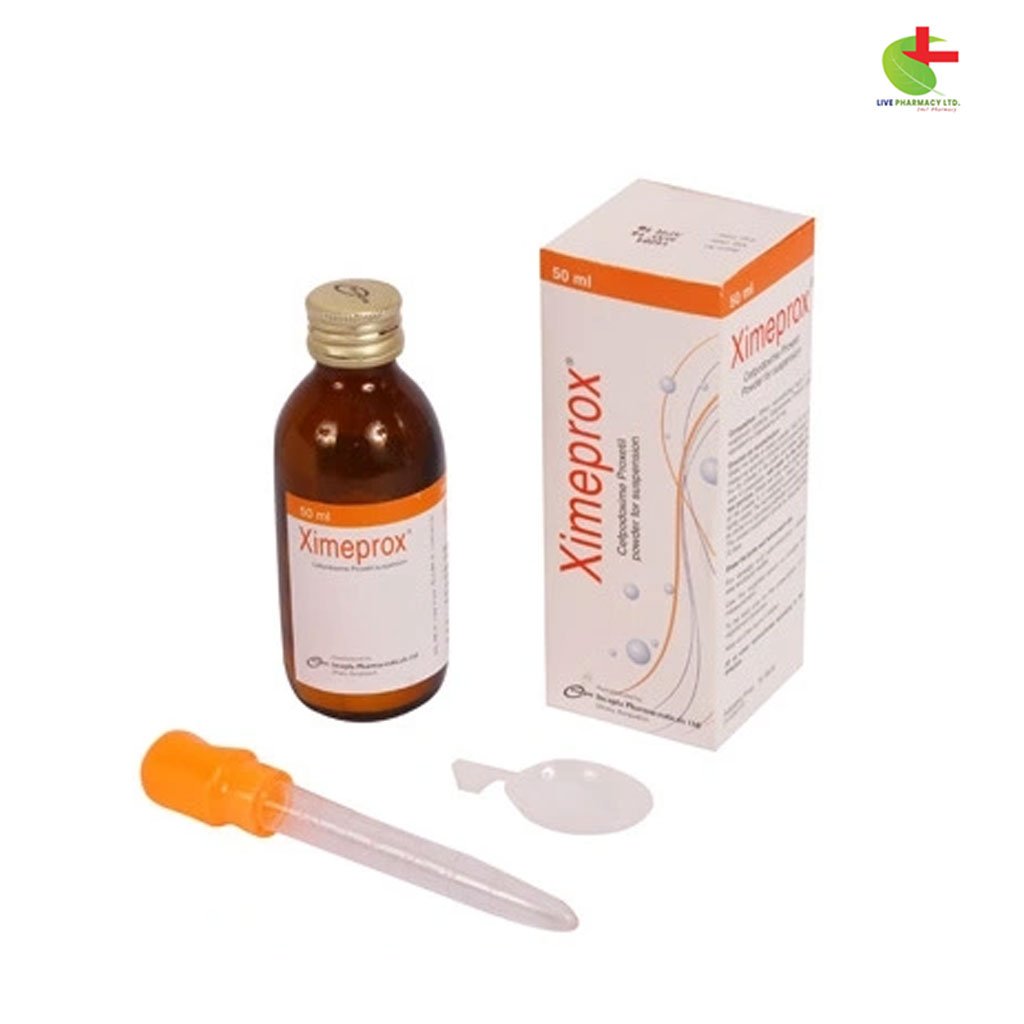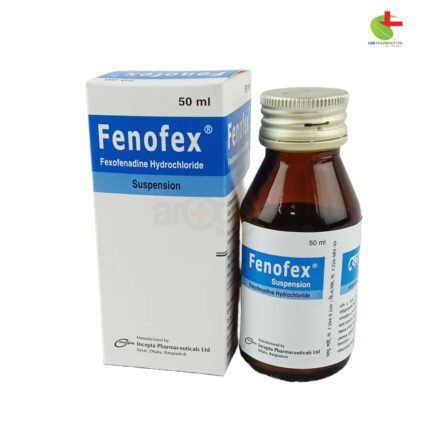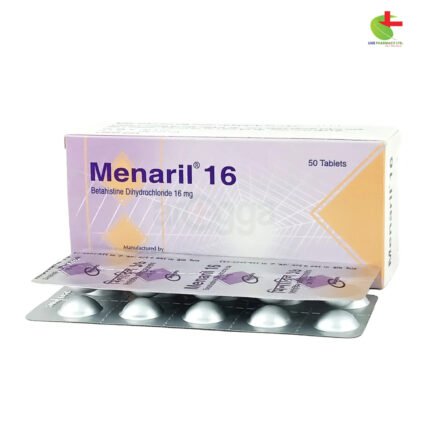Ximeprox Suspension 100ml
195.00৳ Bottle (100ml)
- Ximeprox is a third-generation cephalosporin antibiotic indicated for treating various infections caused by susceptible microorganisms, including acute otitis media, pharyngitis, sinusitis, and skin infections.
- It is effective against both Gram-positive and Gram-negative bacteria, including strains resistant to beta-lactamase.
- Common side effects may include diarrhea, nausea, and headache.
- Use with caution in patients with renal impairment and during pregnancy and lactation.
- Store the reconstituted suspension in a cool, dry place, discarding any unused portion after 14 days.
 Brand
Brand
|
Incepta Pharmaceuticals Ltd |
|---|---|
 Generics
Generics
|
Cefpodoxime Proxetil |
 Type
Type
|
Powder for Suspension |
Indications
Ximeprox is prescribed for the effective treatment of infections caused by various susceptible microorganisms, including:
- Acute Otitis Media: Infections caused by Streptococcus pneumoniae, Streptococcus pyogenes, Haemophilus influenzae, and Moraxella catarrhalis (including beta-lactamase producing strains).
- Pharyngitis/Tonsillitis: Primarily due to Streptococcus pyogenes.
- Acute Maxillary Sinusitis: Resulting from Haemophilus influenzae (including beta-lactamase producing strains), Streptococcus pneumoniae, and Moraxella catarrhalis.
- Community-Acquired Pneumonia: Caused by S. pneumoniae or H. influenzae (including beta-lactamase-producing strains).
- Acute Bacterial Exacerbation of Chronic Bronchitis: Triggered by S. pneumoniae, H. influenzae (only non-beta-lactamase-producing strains), or M. catarrhalis.
- Skin and Skin Structure Infections: Associated with Staphylococcus aureus and Streptococcus pyogenes.
- Uncomplicated Urinary Tract Infections: Caused by E. coli, Klebsiella pneumoniae, Proteus mirabilis, or Staphylococcus saprophyticus.
- Uncomplicated Gonorrhea: Due to Neisseria gonorrhoeae (including penicillinase-producing strains).
- Rectal Gonococcal Infections in Women: Resulting from Neisseria gonorrhoeae (including penicillinase-producing strains).
Consult a registered physician before use.
Pharmacology
Cefpodoxime is an oral third-generation cephalosporin known for its stability against beta-lactamases and effectiveness against both Gram-negative and Gram-positive bacteria. It is suitable for treating infections even before identifying the causative organism. As a prodrug, its active metabolite is Cefpodoxime, with approximately 29% to 33% excreted unchanged in urine within 12 hours.
Cefpodoxime is effective against a wide array of susceptible microorganisms, including various Gram-positive and Gram-negative bacteria. Its high stability in the presence of β-lactamase enzymes makes it particularly effective against Gram-positive bacteria compared to other third-generation oral cephalosporins. The susceptible organisms include:
- Gram-positive Bacteria: S. aureus (including penicillinase-producing strains), S. saprophyticus, S. pneumoniae, S. pyogenes, S. agalactiae, and P. magnus.
- Gram-negative Bacteria: E. coli, K. pneumoniae, H. influenzae (including β-lactamase and ampicillin-resistant strains), M. catarrhalis, N. gonorrhoeae (including penicillinase-producing strains), P. mirabilis, C. diversus, H. parainfluenzae, K. oxytoca, P. vulgaris, and P. rettgeri.
Dosage & Administration
For Adults and Adolescents (13 years and older):
- Pharyngitis/Tonsillitis: 100 mg every 12 hours for 5 to 10 days
- Acute Maxillary Sinusitis: 200 mg every 12 hours for 10 days
- Community-Acquired Pneumonia: 200 mg every 12 hours for 14 days
- Acute Bacterial Exacerbations of Chronic Bronchitis: 200 mg every 12 hours for 10 days
- Skin and Skin Structure Infections: 400 mg every 12 hours for 7 to 14 days
- Uncomplicated Urinary Tract Infection: 100 mg every 12 hours for 7 days
- Uncomplicated Gonorrhea: Single dose of 200 mg
- Rectal Gonococcal Infections in Women: Single dose of 200 mg
For Infants and Pediatric Patients (2 months to 12 years):
- Acute Otitis Media: 5 mg/kg body weight every 12 hours for 5 days
- Pharyngitis/Tonsillitis: 5 mg/kg body weight every 12 hours for 5 to 10 days
- Acute Maxillary Sinusitis: 5 mg/kg body weight every 12 hours for 10 days
For Patients with Renal Dysfunction: In cases of severe renal impairment (creatinine clearance <30 ml/min), increase dosing intervals to every 24 hours.
For Patients with Liver Cirrhosis: No dose adjustment is necessary as pharmacokinetics are similar to healthy individuals.
Consult a registered physician before use.
Interactions
- Antacids: Concurrent use of high doses of antacids (sodium bicarbonate and aluminium hydroxide) or H2 blockers can reduce peak plasma levels by 24% to 42% and absorption by 27% to 32%.
- Probenecid: Co-administration can inhibit the renal excretion of cefpodoxime, increasing AUC by approximately 31%.
- Nephrotoxic Drugs: Close monitoring of renal function is advised when Ximeprox is used alongside known nephrotoxic agents.
Contraindications
Cefpodoxime Proxetil is contraindicated for individuals with a known allergy to cefpodoxime or any cephalosporin antibiotics.
Side Effects
Ximeprox is generally well-tolerated with minimal side effects, which may include:
- Diarrhea
- Nausea
- Skin and vaginal fungal infections
- Abdominal pain
- Headaches
- Chest pain
- Myalgia
- Dyspepsia
- Dizziness
- Vertigo
- Cough
Note: Children may experience a higher incidence of fungal skin rashes compared to adults.
Pregnancy & Lactation
Cefpodoxime has not shown teratogenic or embryocidal effects in animal studies. However, there are no adequate and well-controlled studies in pregnant women. The use of this medication during pregnancy should only occur when absolutely necessary. As cefpodoxime is excreted in human milk, a decision should be made whether to discontinue breastfeeding or to stop the medication.
Precautions & Warnings
In patients with reduced urinary output due to renal insufficiency, the total daily dose of Ximeprox should be decreased. Caution is advised when administering Ximeprox alongside potent diuretics. Prolonged use may lead to the overgrowth of non-susceptible organisms, necessitating regular evaluation of the patient’s condition.
Therapeutic Class
Third-Generation Cephalosporins
Reconstitution Instructions
To prepare a 50 ml suspension, add 30 ml (6 teaspoonfuls or using the provided cup) of cooled, boiled water to the dry mixture in the bottle. For optimal mixing, add water in two portions, shaking well after each addition until the powder is fully suspended.
Note: Shake the suspension well before each use. Store the bottle tightly closed in a cool, dry place, preferably in the refrigerator. Discard any unused portion after 14 days.
Storage Conditions
Store in a dry place away from light and heat. Keep out of reach of children.













Reviews
There are no reviews yet.